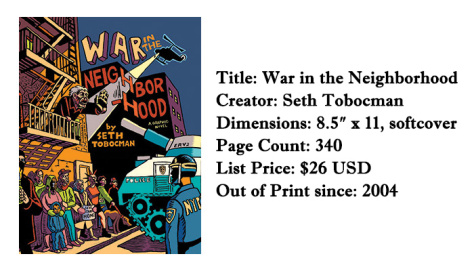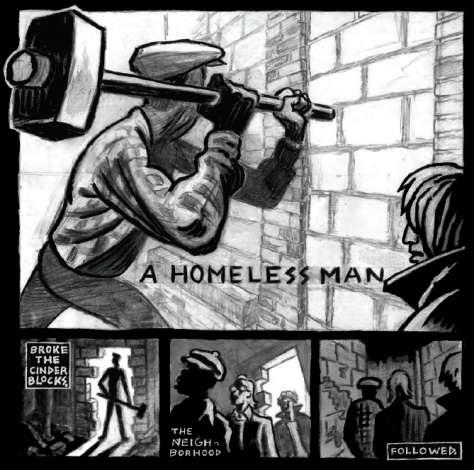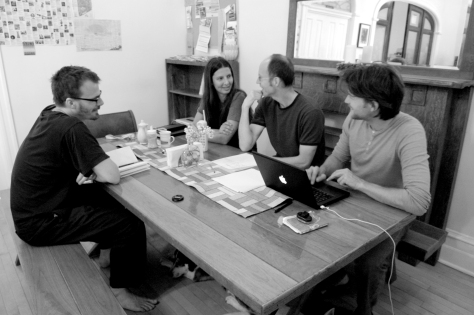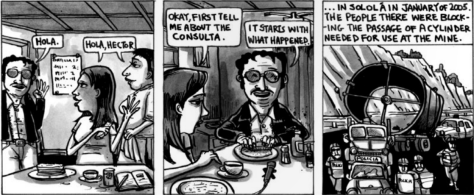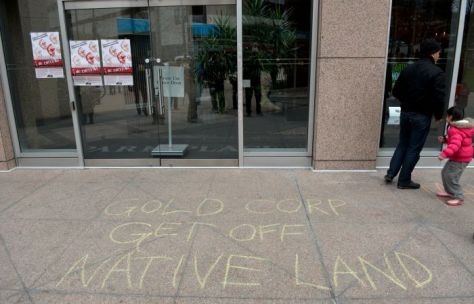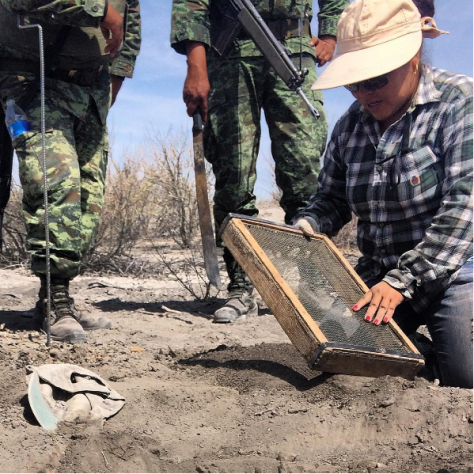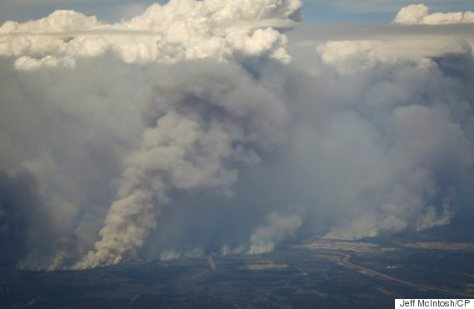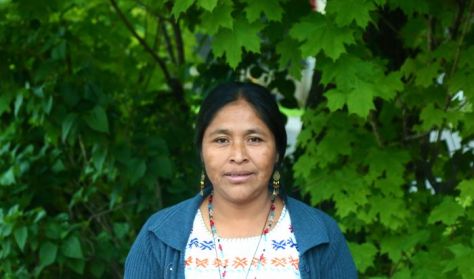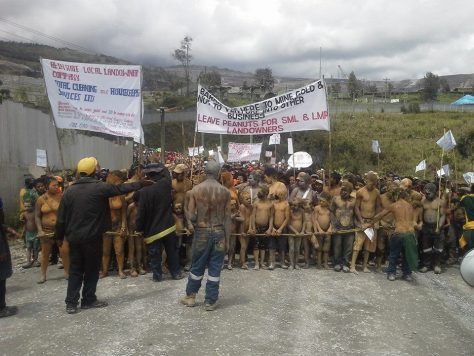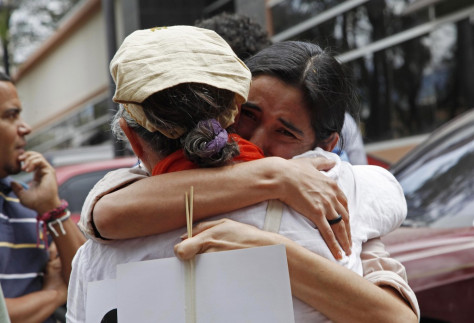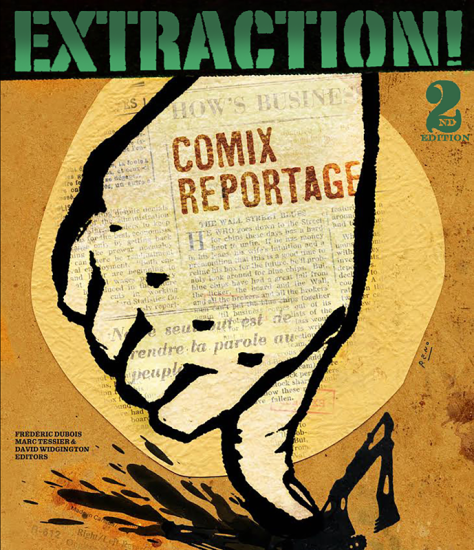As we run our most recent crowdfunding project, we have taken a dive into the history of squatting as a practice of anti-capitalist resistance. In many parts of North America, it’s difficult to conceive of squatting as anything other than a romantic ideal – except for the fact that settler societies are squatter societies by nature, albeit of an objectionable variety. Meanwhile in Europe there are vibrant squatters’ movements in the Netherlands, Greece, Germany and many other countries. What’s the secret to their success? You might find a few clues in the books below.
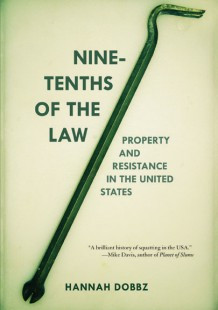 1. Hannah Dobbz – editor of “Nine-Tenths of the Law: Property and Resistance”
1. Hannah Dobbz – editor of “Nine-Tenths of the Law: Property and Resistance”
From AK Press, the publisher: “How does “property” fit into designs for an equitable society? Nine-Tenths of the Law examines the history of squatting and property struggles in the US, from colonialism to 20th-century urban squatting and the foreclosure crisis of the late 2000s, and how such resistance movements shape the law. Squatting is defined by Dobbz as “occupying an otherwise abandoned structure without exchanging money or engaging in a formal permissive agreement.” Stories from our most hard-hit American cities show that property is truly in crisis.”
Learn more here
2. Squatting Europe Kollective – “The Squatters’ Movement in Europe: Commons and Autonomy as Alternatives to Capitalism”
 From Pluto Press, the publisher: “The Squatters’ Movement in Europe is the first definitive guide to squatting as an alternative to capitalism. It offers a unique insider’s view on the movement – its ideals, actions and ways of life. At a time of growing crisis in Europe with high unemployment, dwindling social housing and declining living standards, squatting has become an increasingly popular option.
From Pluto Press, the publisher: “The Squatters’ Movement in Europe is the first definitive guide to squatting as an alternative to capitalism. It offers a unique insider’s view on the movement – its ideals, actions and ways of life. At a time of growing crisis in Europe with high unemployment, dwindling social housing and declining living standards, squatting has become an increasingly popular option.
The book is written by an activist-scholar collective, whose members have direct experience of squatting: many are still squatters today. There are contributions from the Netherlands, Spain, the USA, France, Italy, Germany, Switzerland and the UK.”
Learn more here
3. Nazima Kadir – “The Autonomous Life? Paradoxes of Hierarchy and Authority in the Squatters Movement in Amsterdam”
 From Manchester University Press, the publisher: “ ‘The Autonomous Life?’ is an ethnography of the squatters’ movement in Amsterdam written by an anthropologist who lived and worked in a squatters’ community for over three years. During that time she resided as a squatter in four different houses, worked on two successful anti-gentrification campaigns, was evicted from two houses and jailed once. With this unique perspective, Kadir systematically examines the contradiction between what people say and what they practice in a highly ideological radicalleftcommunity. The squatters’ movement defines itself primarily as anti-hierarchical and anti-authoritarian, and yet is perpetually plagued by the contradiction between this public disavowal and the maintenance of hierarchy and authority within the movement. This study analyses how this contradiction is then reproduced in different micro-social interactions, examining the methods by which people negotiate minute details of their daily lives as squatter activists in the face of a fun house mirror of ideological expectations reflecting values from within the squatter community, that, in turn, often refract mainstream, middle-class norms.”
From Manchester University Press, the publisher: “ ‘The Autonomous Life?’ is an ethnography of the squatters’ movement in Amsterdam written by an anthropologist who lived and worked in a squatters’ community for over three years. During that time she resided as a squatter in four different houses, worked on two successful anti-gentrification campaigns, was evicted from two houses and jailed once. With this unique perspective, Kadir systematically examines the contradiction between what people say and what they practice in a highly ideological radicalleftcommunity. The squatters’ movement defines itself primarily as anti-hierarchical and anti-authoritarian, and yet is perpetually plagued by the contradiction between this public disavowal and the maintenance of hierarchy and authority within the movement. This study analyses how this contradiction is then reproduced in different micro-social interactions, examining the methods by which people negotiate minute details of their daily lives as squatter activists in the face of a fun house mirror of ideological expectations reflecting values from within the squatter community, that, in turn, often refract mainstream, middle-class norms.”
Learn more here
4. Pierpaolo Mudu and Sutapa Chattopadhyay – “Migration, Squatting, and Radical Autonomy” Edited by P.M. and S.C. on behalf of the Squatting Europe Collective
 From Routledge, the publisher: “This book offers a unique contribution, exploring how the intersections among migrants and radical squatter’s movements have evolved over past decades. The complexity and importance of squatting practices are analyzed from a bottom-up perspective, to demonstrate how the spaces of squatting can be transformed by migrants. With contributions from scholars, scholar-activists, and activists, this book provides unique insights into how squatting has offered an alternative to dominant anti-immigrant policies, and the implications of squatting on the social acceptance of migrants.”
From Routledge, the publisher: “This book offers a unique contribution, exploring how the intersections among migrants and radical squatter’s movements have evolved over past decades. The complexity and importance of squatting practices are analyzed from a bottom-up perspective, to demonstrate how the spaces of squatting can be transformed by migrants. With contributions from scholars, scholar-activists, and activists, this book provides unique insights into how squatting has offered an alternative to dominant anti-immigrant policies, and the implications of squatting on the social acceptance of migrants.”
Learn more here
5. Lynn Owens – “Cracking Under Pressure: Narrating the Decline of the Amsterdam Squatters’ Movement”
 From Penn State University Press, the publisher: “Social movements excite and energize their participants in their early phases, with expectations high and ambitions yet unchecked by reality. Consequently, the academic study of social movements has focused primarily on the stages of mobilization and growth. But all movements eventually decline, and it is important to understand why they do, when they do, and what the effects of decline are.
From Penn State University Press, the publisher: “Social movements excite and energize their participants in their early phases, with expectations high and ambitions yet unchecked by reality. Consequently, the academic study of social movements has focused primarily on the stages of mobilization and growth. But all movements eventually decline, and it is important to understand why they do, when they do, and what the effects of decline are.
Lynn Owens aims to broaden and enrich social movement theory by focusing on this phase of decline. He does so through a close investigation of the fate of the squatters’ movement in Amsterdam, which emerged in the late 1970s as a reaction to the housing shortage of the 1960s, peaked in the early 1980s at some 10,000 participants, and then fell into a period of prolonged decline. As a movement significant for its influence on radical movements elsewhere in Europe and for its contribution to Amsterdam’s reputation as a center of countercultural activity, this case study affords an opportunity to examine not only why movements decline but also how—how activists respond to decline first by downplaying it, then by debating it, and finally by adjusting to it.”
Learn more here
5. Bart van de Steen – “The City is Ours: Squatting and Autonomous Movements in Europe from the 1970s to the Present”
 From PM Press, the publisher: “Squatters and autonomous movements have been in the forefront of radical politics in Europe for nearly a half-century—from struggles against urban renewal and gentrification, to large-scale peace and environmental campaigns, to spearheading the antiausterity protests sweeping the continent.
From PM Press, the publisher: “Squatters and autonomous movements have been in the forefront of radical politics in Europe for nearly a half-century—from struggles against urban renewal and gentrification, to large-scale peace and environmental campaigns, to spearheading the antiausterity protests sweeping the continent.
Through the compilation of the local movement histories of eight different cities—including Amsterdam, Berlin, and other famous centers of autonomous insurgence along with underdocumented cities such as Poznan and Athens—The City Is Ours paints a broad and complex picture of Europe’s squatting and autonomous movements.”
Learn more here
6. Stephen Luis Vilaseca – “Barcelonan Okupas: Squatter Power!”
 “From Rowman and Littlefield, the publisher: Barcelonan Okupas: Squatter Power! is the first book to combine close-readings of the representations of Spanish squatters known as okupas with the study of everyday life, built environment, and city planning in Barcelona. Vilaseca broadens the scope of Spanish cultural studies by integrating into it notions of embodied cognition and affect that respond to the city before and against the fixed relations of capitalism. Social transformation, as demonstrated by the okupas, is possible when city and art interrelate, not through capital or the urbanization of consciousness but through bodily thought. The okupas reconfigure the way thoughts, words, images and bodily responses are linked by evoking and communicating the idea of free exchange and openness through art (poetry, music, performance art, the plastic arts, graffiti, urban art and cinema); and by acting out and rehearsing these ideas in the practice of squatting. The okupas challenge society to differentiate the images and representations instituted by state domination or capitalist exploitation from the subversive potential of imagination. The okupas unify theory and practice, word and body, in pursuit of a positive, social vision that might serve humanity and lead the way out of the current problems caused by capitalism.”
“From Rowman and Littlefield, the publisher: Barcelonan Okupas: Squatter Power! is the first book to combine close-readings of the representations of Spanish squatters known as okupas with the study of everyday life, built environment, and city planning in Barcelona. Vilaseca broadens the scope of Spanish cultural studies by integrating into it notions of embodied cognition and affect that respond to the city before and against the fixed relations of capitalism. Social transformation, as demonstrated by the okupas, is possible when city and art interrelate, not through capital or the urbanization of consciousness but through bodily thought. The okupas reconfigure the way thoughts, words, images and bodily responses are linked by evoking and communicating the idea of free exchange and openness through art (poetry, music, performance art, the plastic arts, graffiti, urban art and cinema); and by acting out and rehearsing these ideas in the practice of squatting. The okupas challenge society to differentiate the images and representations instituted by state domination or capitalist exploitation from the subversive potential of imagination. The okupas unify theory and practice, word and body, in pursuit of a positive, social vision that might serve humanity and lead the way out of the current problems caused by capitalism.”
Learn more here
7. Agnes Gagyi – “Hungary: The Constitution of the ‘political’ in Squatting”
From Baltic Worlds, the publisher:
“The idea of political squatting has been codified in the practice and self-reflection of Western European radicalizing movements, which turned, following the downturn of the 1968 movement cycle, to conflictual strategies in urban settings, to voice problems of housing, youth unemployment, and various countercultural values. In defining political squatting, researchers rely on these historical backgrounds to grasp the political dimension that makes squatting more than simple occupation. In doing so, they tend to raise elements of the Western European historical context as evident corollaries of the phenomenon. For example, in a new comparative study on Western European squatters’ movements in 52 large cities, Guzman1 summarizes the literature on political squatting, identifying typical elements of the political context of squatting in phenomena such as support by the New Left and the Greens, squats serving as platforms for the extra-parliamentary left, involving Marxists, autonomists, anarchists, and a left-libertarian subculture, and being part of campaigns for affordable housing or minority rights, or against war, neo-Nazis, unemployment, precariousness, urban speculation and regeneration projects, gentrification, and displacement”
Learn more here
8. Håkan Thörn et al – “Space for Urban Alternatives: Christiana 1971 – 2011”
From the Goteborg University website: “In 1971, a group of young people broke into a closed down military area in Copenhagen. It was located not more than a mile from the Royal Danish Palace and the Danish parliament. Soon, the media published images and reports from the proclamation of the Freetown Christiania, and people travelled from all over Europe to be part of the foundation of a new community. A ‘Christiania Act’ passed by a broad parliamentary majority in 1989 legalised the squat and made it possible to grant Christiania the rigth to collective use of the area. However, this was reversed under the Liberal-Conservative government in 2004 when the parliament decided on changes in the 1989 Christiania law. The Freetown has refused to give up its claims on the property so it remains highly contested. Around 900 people live in Christiania today. It is governed through a decentralised democratic structure, whose autonomy is strongly contingent on the Freetown’s external relations with the Danish government, the Copenhagen Municipality, the Copenhagen Police and to the organised crime in connection with the cannabis trade. This book brings together ten researchers from various disciplines; Sociology, Anthropology, History, Geography, Art, Urban planning, Landscape architecture and Political science to bring thier own reflections on the unique community that is Christiania. In the introductory chapter, the editors provide an overview of the research that has been done on the settlement from the early 1970s to the 2000s.”
Learn more here
Interested in learning about the history of squatting here in North America? Check out our pre-order campaign for Seth Tobocman’s ‘War in the Neighborhood’, a 300 pg account of squatting and the fight against gentrification on New York’s Lower East Side.
Save










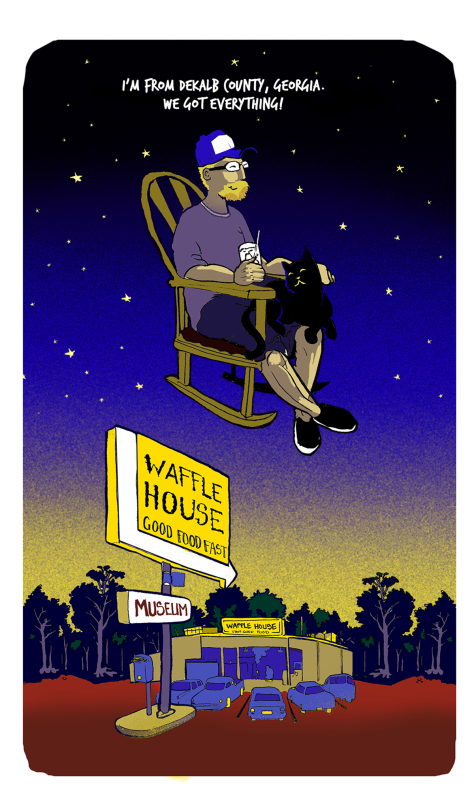
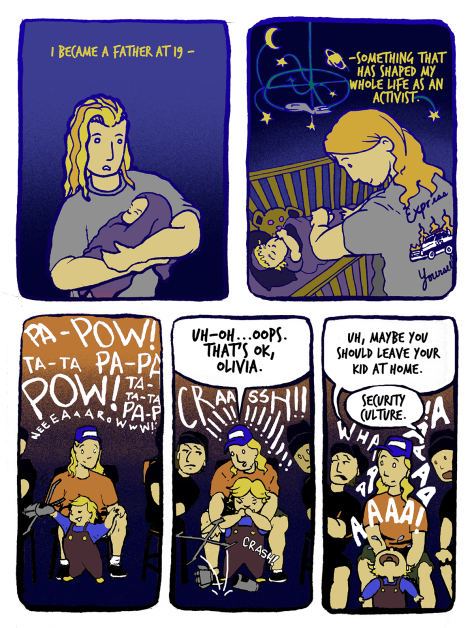
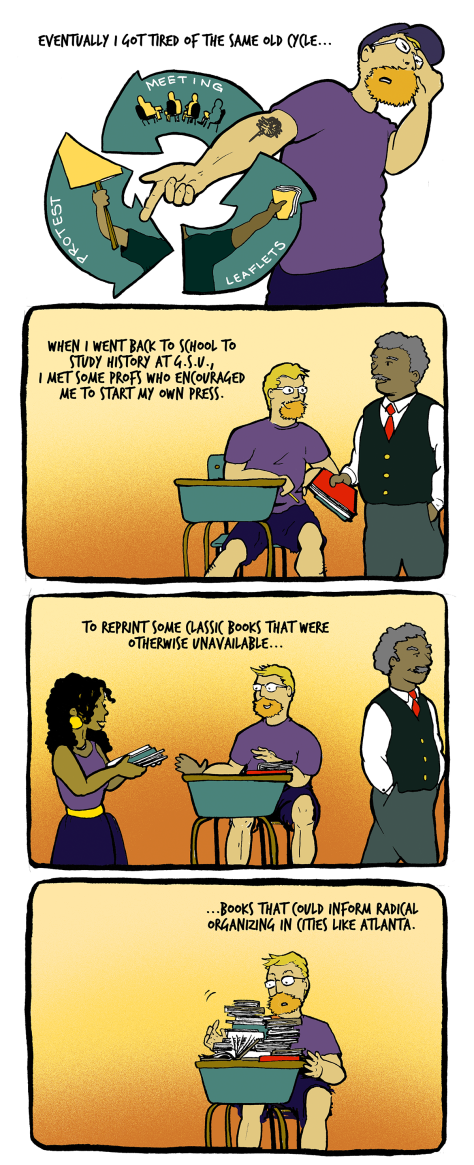
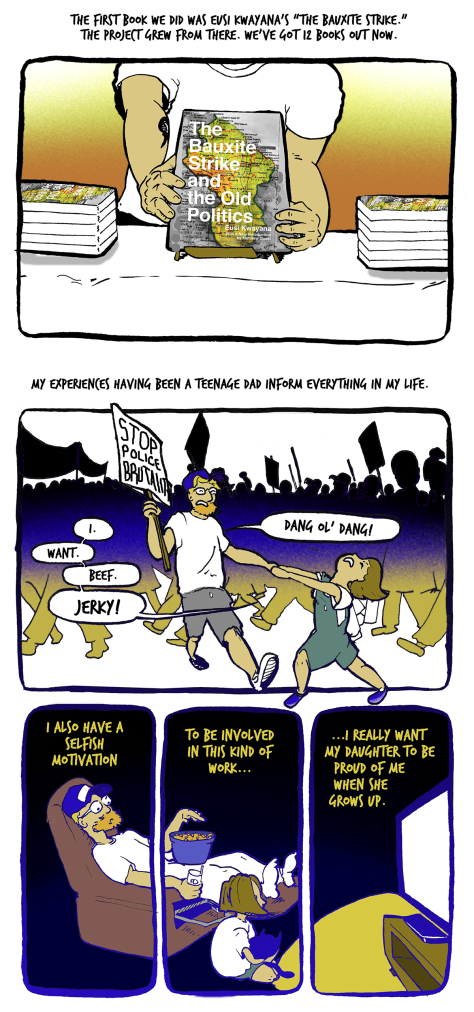
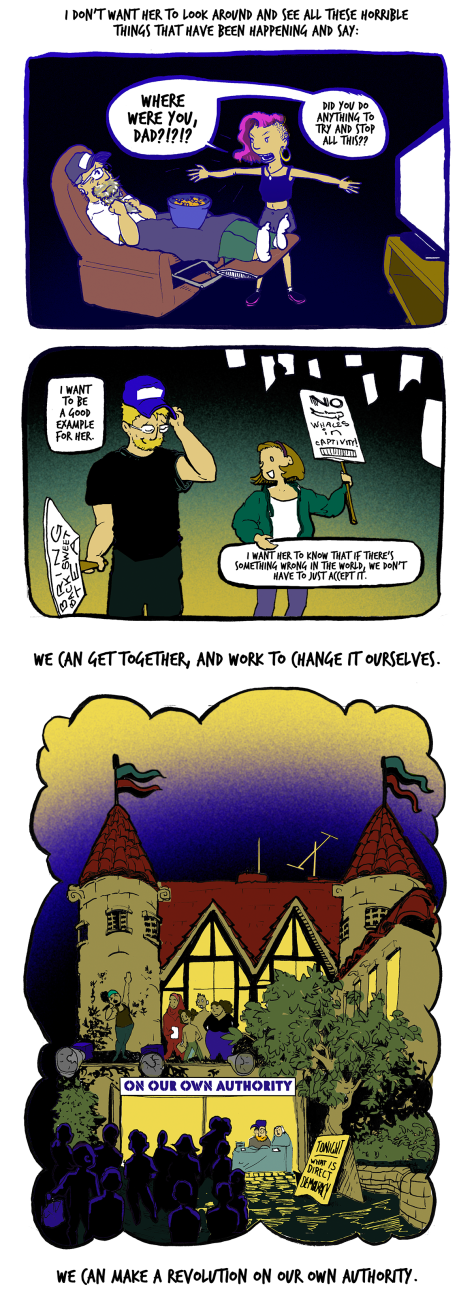

 1. Both take place in New York City’s Lower East Side
1. Both take place in New York City’s Lower East Side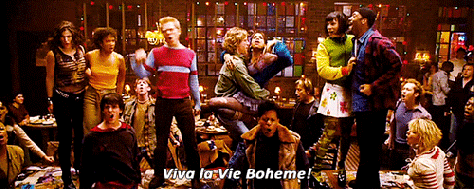
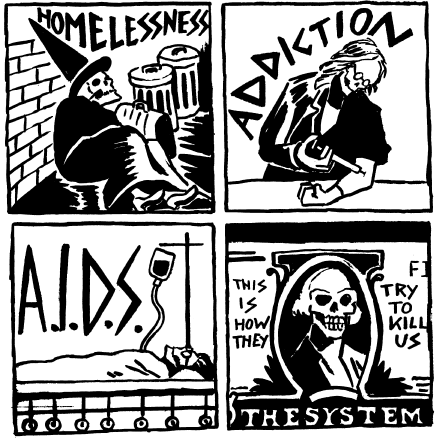
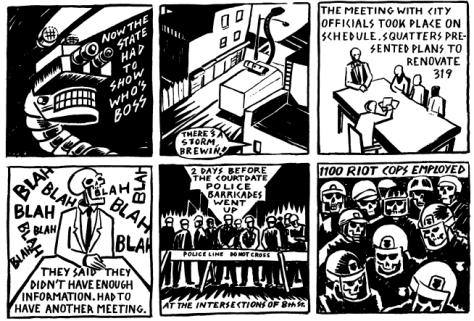
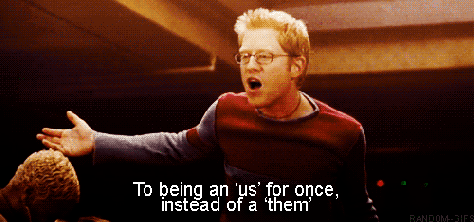
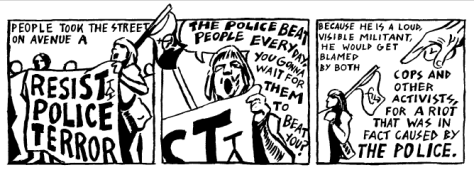
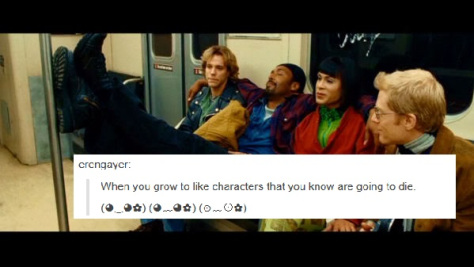
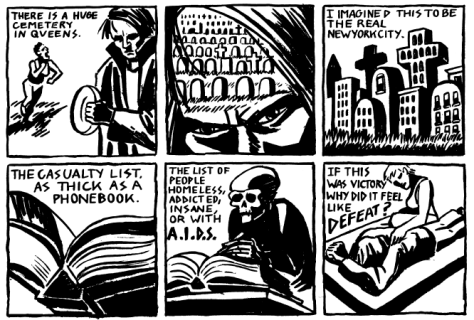
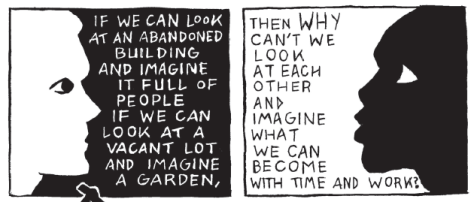

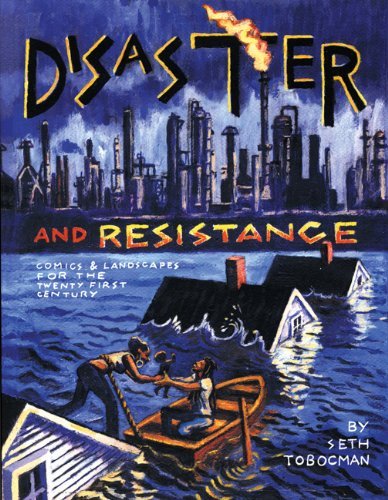
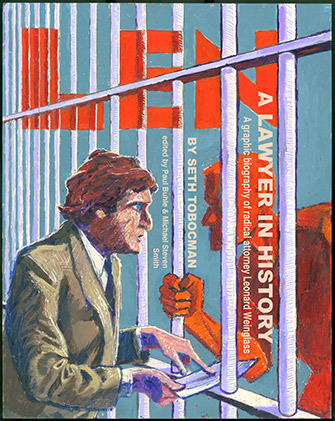
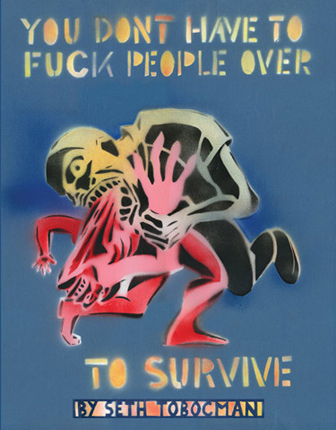

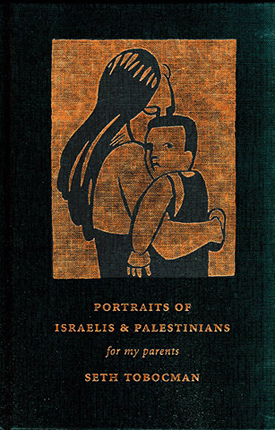
































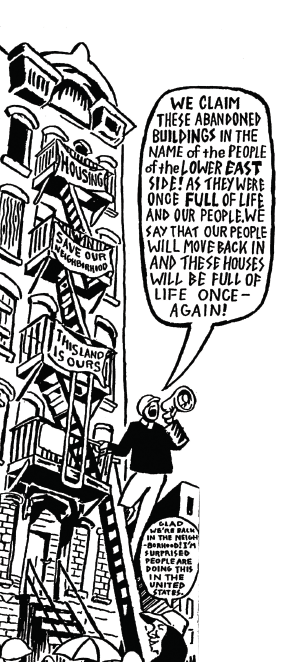 The struggles we find ourselves in –for justice, equality, and a democracy worthy of the name– are not new. Yet we’re endlessly forming new groups, writing new charters, experimenting with new tactics as though we were the first people ever to struggle against injustice.
The struggles we find ourselves in –for justice, equality, and a democracy worthy of the name– are not new. Yet we’re endlessly forming new groups, writing new charters, experimenting with new tactics as though we were the first people ever to struggle against injustice.
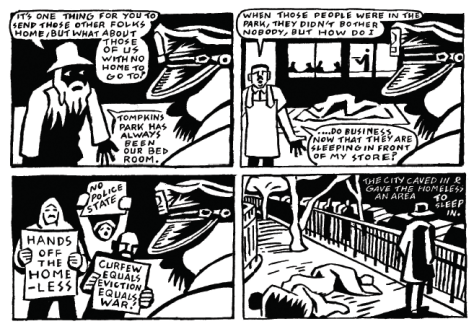
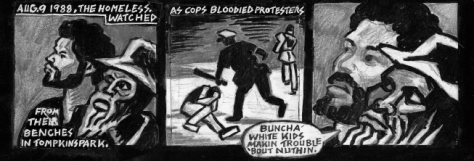
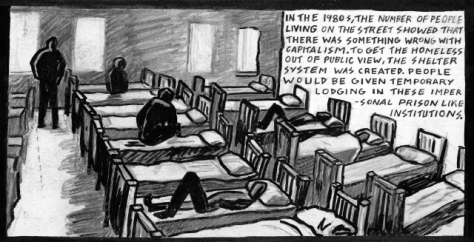
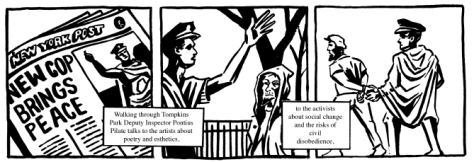
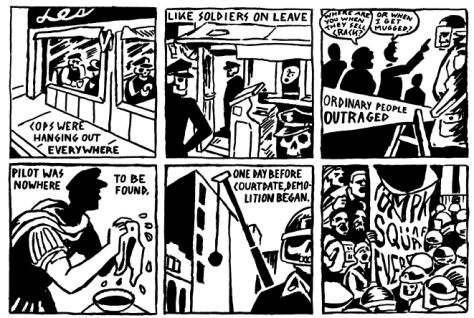
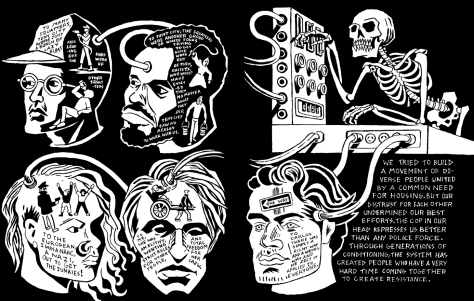
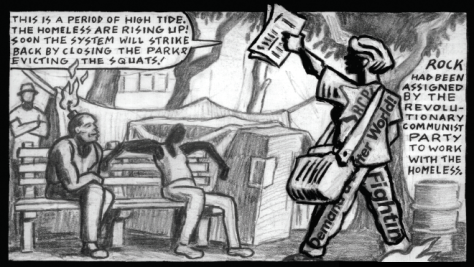
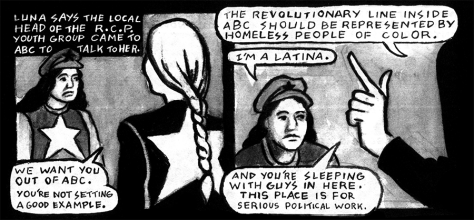
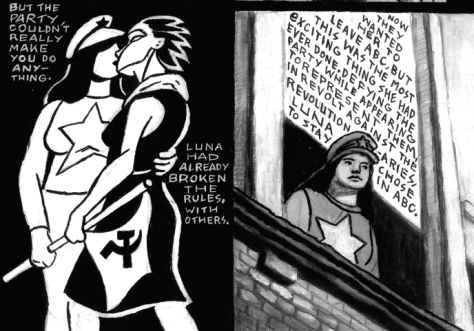
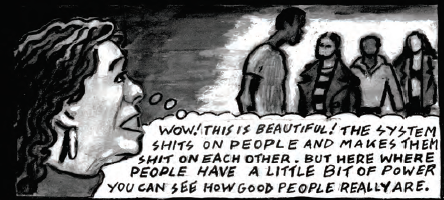


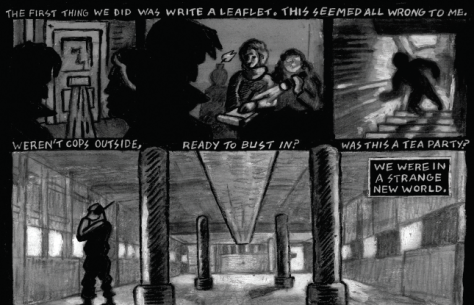

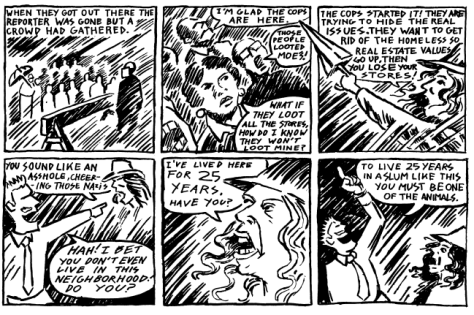



 1. Hannah Dobbz – editor of “Nine-Tenths of the Law: Property and Resistance”
1. Hannah Dobbz – editor of “Nine-Tenths of the Law: Property and Resistance” From Pluto Press, the publisher: “The Squatters’ Movement in Europe is the first definitive guide to squatting as an alternative to capitalism. It offers a unique insider’s view on the movement – its ideals, actions and ways of life. At a time of growing crisis in Europe with high unemployment, dwindling social housing and declining living standards, squatting has become an increasingly popular option.
From Pluto Press, the publisher: “The Squatters’ Movement in Europe is the first definitive guide to squatting as an alternative to capitalism. It offers a unique insider’s view on the movement – its ideals, actions and ways of life. At a time of growing crisis in Europe with high unemployment, dwindling social housing and declining living standards, squatting has become an increasingly popular option. From Manchester University Press, the publisher: “ ‘The Autonomous Life?’ is an ethnography of the squatters’ movement in Amsterdam written by an anthropologist who lived and worked in a squatters’ community for over three years. During that time she resided as a squatter in four different houses, worked on two successful anti-gentrification campaigns, was evicted from two houses and jailed once. With this unique perspective, Kadir systematically examines the contradiction between what people say and what they practice in a highly ideological radicalleftcommunity. The squatters’ movement defines itself primarily as anti-hierarchical and anti-authoritarian, and yet is perpetually plagued by the contradiction between this public disavowal and the maintenance of hierarchy and authority within the movement. This study analyses how this contradiction is then reproduced in different micro-social interactions, examining the methods by which people negotiate minute details of their daily lives as squatter activists in the face of a fun house mirror of ideological expectations reflecting values from within the squatter community, that, in turn, often refract mainstream, middle-class norms.”
From Manchester University Press, the publisher: “ ‘The Autonomous Life?’ is an ethnography of the squatters’ movement in Amsterdam written by an anthropologist who lived and worked in a squatters’ community for over three years. During that time she resided as a squatter in four different houses, worked on two successful anti-gentrification campaigns, was evicted from two houses and jailed once. With this unique perspective, Kadir systematically examines the contradiction between what people say and what they practice in a highly ideological radicalleftcommunity. The squatters’ movement defines itself primarily as anti-hierarchical and anti-authoritarian, and yet is perpetually plagued by the contradiction between this public disavowal and the maintenance of hierarchy and authority within the movement. This study analyses how this contradiction is then reproduced in different micro-social interactions, examining the methods by which people negotiate minute details of their daily lives as squatter activists in the face of a fun house mirror of ideological expectations reflecting values from within the squatter community, that, in turn, often refract mainstream, middle-class norms.” From Routledge, the publisher: “This book offers a unique contribution, exploring how the intersections among migrants and radical squatter’s movements have evolved over past decades. The complexity and importance of squatting practices are analyzed from a bottom-up perspective, to demonstrate how the spaces of squatting can be transformed by migrants. With contributions from scholars, scholar-activists, and activists, this book provides unique insights into how squatting has offered an alternative to dominant anti-immigrant policies, and the implications of squatting on the social acceptance of migrants.”
From Routledge, the publisher: “This book offers a unique contribution, exploring how the intersections among migrants and radical squatter’s movements have evolved over past decades. The complexity and importance of squatting practices are analyzed from a bottom-up perspective, to demonstrate how the spaces of squatting can be transformed by migrants. With contributions from scholars, scholar-activists, and activists, this book provides unique insights into how squatting has offered an alternative to dominant anti-immigrant policies, and the implications of squatting on the social acceptance of migrants.” From Penn State University Press, the publisher: “Social movements excite and energize their participants in their early phases, with expectations high and ambitions yet unchecked by reality. Consequently, the academic study of social movements has focused primarily on the stages of mobilization and growth. But all movements eventually decline, and it is important to understand why they do, when they do, and what the effects of decline are.
From Penn State University Press, the publisher: “Social movements excite and energize their participants in their early phases, with expectations high and ambitions yet unchecked by reality. Consequently, the academic study of social movements has focused primarily on the stages of mobilization and growth. But all movements eventually decline, and it is important to understand why they do, when they do, and what the effects of decline are. From PM Press, the publisher: “Squatters and autonomous movements have been in the forefront of radical politics in Europe for nearly a half-century—from struggles against urban renewal and gentrification, to large-scale peace and environmental campaigns, to spearheading the antiausterity protests sweeping the continent.
From PM Press, the publisher: “Squatters and autonomous movements have been in the forefront of radical politics in Europe for nearly a half-century—from struggles against urban renewal and gentrification, to large-scale peace and environmental campaigns, to spearheading the antiausterity protests sweeping the continent. “From Rowman and Littlefield, the publisher: Barcelonan Okupas: Squatter Power! is the first book to combine close-readings of the representations of Spanish squatters known as okupas with the study of everyday life, built environment, and city planning in Barcelona. Vilaseca broadens the scope of Spanish cultural studies by integrating into it notions of embodied cognition and affect that respond to the city before and against the fixed relations of capitalism. Social transformation, as demonstrated by the okupas, is possible when city and art interrelate, not through capital or the urbanization of consciousness but through bodily thought. The okupas reconfigure the way thoughts, words, images and bodily responses are linked by evoking and communicating the idea of free exchange and openness through art (poetry, music, performance art, the plastic arts, graffiti, urban art and cinema); and by acting out and rehearsing these ideas in the practice of squatting. The okupas challenge society to differentiate the images and representations instituted by state domination or capitalist exploitation from the subversive potential of imagination. The okupas unify theory and practice, word and body, in pursuit of a positive, social vision that might serve humanity and lead the way out of the current problems caused by capitalism.”
“From Rowman and Littlefield, the publisher: Barcelonan Okupas: Squatter Power! is the first book to combine close-readings of the representations of Spanish squatters known as okupas with the study of everyday life, built environment, and city planning in Barcelona. Vilaseca broadens the scope of Spanish cultural studies by integrating into it notions of embodied cognition and affect that respond to the city before and against the fixed relations of capitalism. Social transformation, as demonstrated by the okupas, is possible when city and art interrelate, not through capital or the urbanization of consciousness but through bodily thought. The okupas reconfigure the way thoughts, words, images and bodily responses are linked by evoking and communicating the idea of free exchange and openness through art (poetry, music, performance art, the plastic arts, graffiti, urban art and cinema); and by acting out and rehearsing these ideas in the practice of squatting. The okupas challenge society to differentiate the images and representations instituted by state domination or capitalist exploitation from the subversive potential of imagination. The okupas unify theory and practice, word and body, in pursuit of a positive, social vision that might serve humanity and lead the way out of the current problems caused by capitalism.”